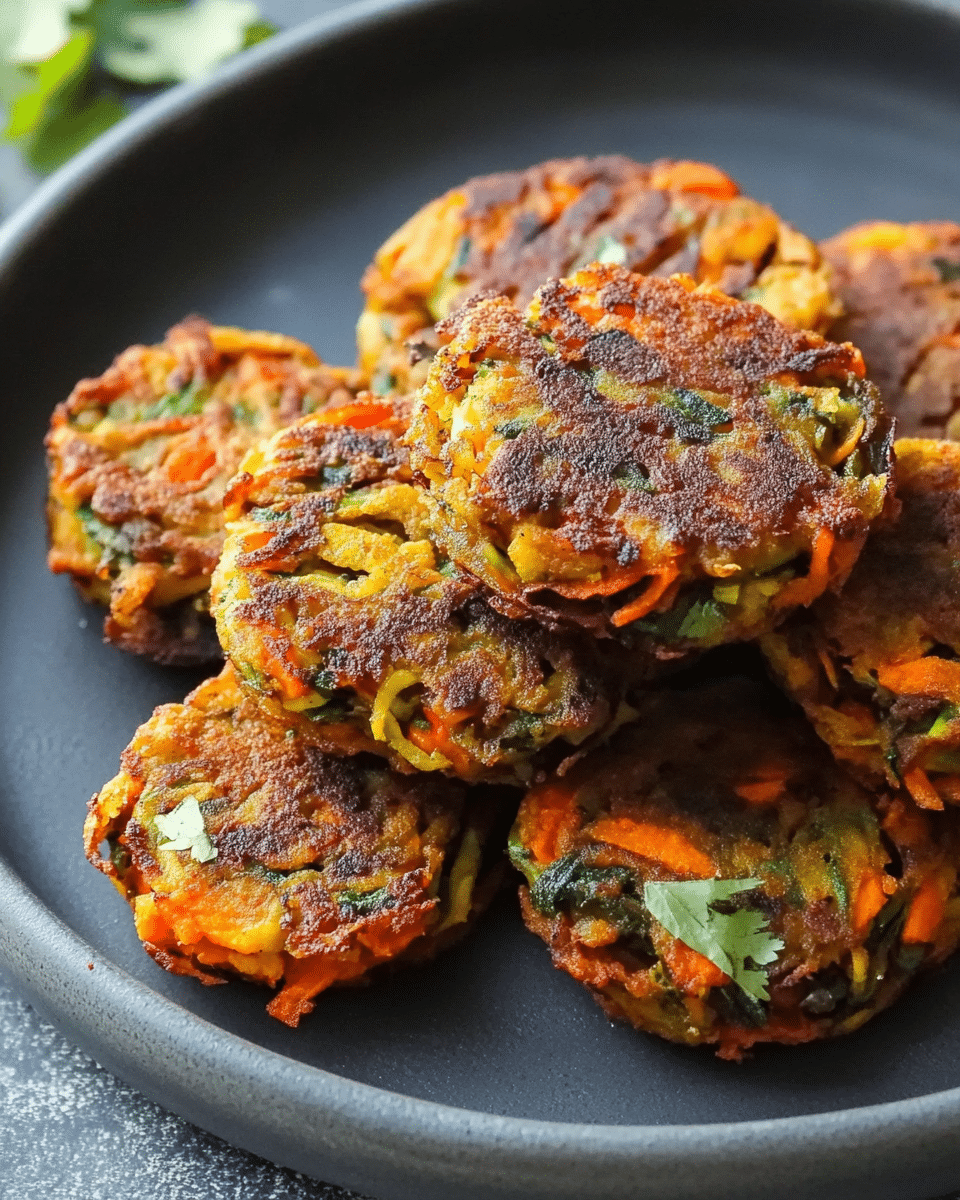Why These Pakoras Are a Wholesome Choice
Unlike many traditional pakora recipes that are deep-fried in large quantities of oil, this version uses a moderate amount of olive oil for frying, which helps reduce saturated fat content. The use of chickpea flour, or besan, makes these pakoras naturally gluten-free, offering a protein-rich and fiber-packed alternative to wheat-based batters.
Chickpea flour brings a subtle nutty flavor and a sturdy texture that holds the shredded vegetables together beautifully. Its low glycemic index also supports stable blood sugar levels, making these pakoras suitable for those managing diabetes or looking for healthier snack options.
The inclusion of fresh vegetables enhances the nutritional value, providing vitamins, minerals, and antioxidants essential for overall health. This blend of fiber-rich veggies supports digestive health and helps increase feelings of fullness, turning what is often an indulgent snack into a more balanced option.
The Magic of Aromatic Spices and Fresh Herbs
The vibrant taste of these pakoras comes from a thoughtfully chosen blend of spices and herbs. Ground turmeric lends its characteristic golden hue and mild earthiness while offering anti-inflammatory properties. Fresh ginger and garlic contribute warmth and depth, enhancing both the aroma and flavor complexity.
Curry leaves, a staple in South Indian cooking, bring a unique citrusy, slightly bitter flavor that elevates the pakoras and complements the sweetness of the shredded vegetables. Fresh coriander adds a burst of freshness and brightness, balancing the richness of the fried batter.
Together, these ingredients create a harmonious and tantalizing flavor profile that awakens the senses and brings the pakoras to life.
Balancing Moisture and Texture for Perfect Pakoras
One of the key challenges in making vegetable pakoras is achieving the perfect balance of moisture. Vegetables like zucchini and cabbage naturally release water, which can make the batter soggy and difficult to fry crisp. This recipe addresses that by salting the vegetables and gently squeezing them to remove excess moisture before combining them with the chickpea flour.
Adding a small amount of baking powder helps introduce lightness to the batter, ensuring the pakoras puff up slightly and achieve a crisp exterior without becoming dense. The combination of these techniques results in pakoras that are crunchy on the outside while tender and flavorful on the inside.
Frying Techniques and Oil Choice
The use of extra virgin olive oil as the frying medium brings a healthier dimension to this classic dish. Olive oil is rich in monounsaturated fats and antioxidants, making it a heart-friendly choice compared to traditional vegetable oils.
Shallow frying the pakoras in just enough oil to coat the base of the pan reduces overall fat absorption while still delivering a satisfyingly crispy texture. Maintaining medium heat is important to ensure even cooking without burning the exterior or leaving the interior undercooked.
This approach to frying makes these pakoras more accessible for everyday cooking and reduces guilt often associated with fried foods.
Versatility in Serving and Pairing
Quick Vegetable Pakoras are incredibly versatile and can be enjoyed in numerous ways. Traditionally served hot and fresh from the pan, they pair wonderfully with tangy mint chutney, tamarind sauce, or even a simple yogurt dip for cooling contrast.
They can be served as an appetizer at gatherings or as a side dish alongside main courses such as curries, dals, or rice-based meals. Their colorful appearance and crunchy texture also make them ideal for lunchboxes or picnic snacks.
For a more substantial meal, pakoras can be accompanied by a fresh salad or a bowl of soup, creating a balanced plate of flavors and textures.
Gluten-Free, Dairy-Free, and Friendly for Many Diets
An added benefit of this pakora recipe is its suitability for a range of dietary needs. Being naturally gluten-free and dairy-free makes it accessible to those with common food intolerances or preferences, without sacrificing flavor or texture.
High fiber content supports digestive health, and the use of whole, plant-based ingredients aligns well with vegetarian and vegan lifestyles (if olive oil is substituted with a vegan-friendly oil). This inclusivity makes pakoras a crowd-pleaser across dietary boundaries.
Nutritional Profile and Health Benefits
These pakoras are a nutrient-dense snack, providing a good balance of macronutrients. Chickpea flour offers plant-based protein, essential for muscle repair and satiety. The diverse vegetable mix supplies vitamins A and C, potassium, and antioxidants, which help combat oxidative stress and support immune function.
Low in saturated fat due to olive oil frying and free from dairy and gluten, they present a guilt-free indulgence that can be enjoyed regularly. The spices used not only enhance flavor but bring anti-inflammatory and digestive benefits, making these pakoras a functional snack as well.
Easy Preparation for Busy Lifestyles
Despite their impressive flavor and texture, these pakoras are quick and simple to prepare. The use of shredded and chopped vegetables keeps prep time minimal, and the straightforward mixing and frying steps are perfect for cooks of all skill levels.
This accessibility makes them an excellent option for weeknight snacks or last-minute entertaining. The recipe’s adaptability means leftover pakoras can be gently reheated or repurposed into wraps or salads, reducing food waste.
Conclusion
Quick Vegetable Pakoras offer a fresh, healthy take on a beloved Indian snack, bringing together vibrant vegetables, fragrant spices, and a gluten-free chickpea flour batter. Their crispy exterior and tender interior deliver satisfying textures that appeal to both veggie enthusiasts and skeptics alike.
By balancing moisture, utilizing heart-healthy olive oil, and incorporating nutrient-rich ingredients, this recipe elevates pakoras from indulgent treats to wholesome snacks suitable for a range of diets and lifestyles. Their versatility, ease of preparation, and delicious flavor profile make them a perfect addition to any meal or social gathering.
Whether served with traditional chutneys or enjoyed on their own, these pakoras are a flavorful, nutritious way to celebrate vegetables and spice, inviting everyone to enjoy the rich culinary heritage of Indian cuisine in a fresh, modern way.






